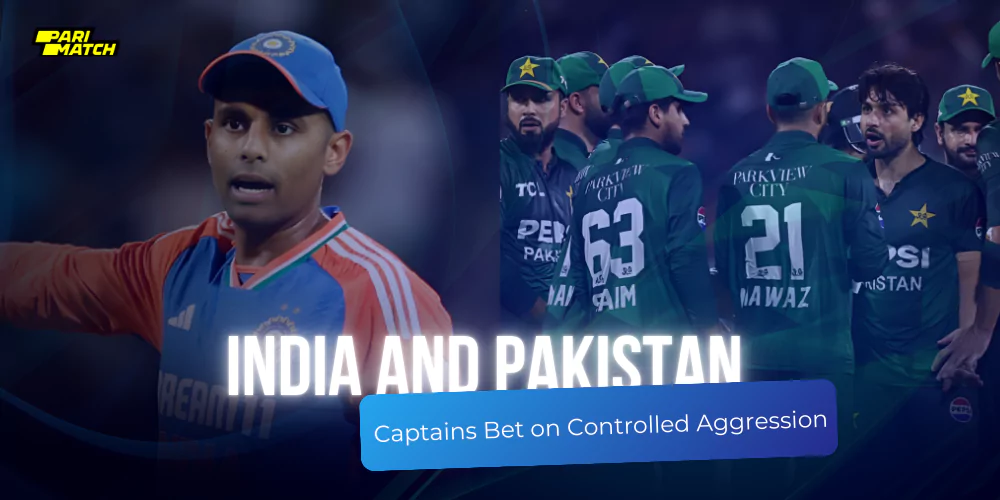Few sporting rivalries in the world carry the weight, drama, and raw emotion of an India vs Pakistan cricket match. From packed stadiums to millions of glued television screens, every clash between the two sides becomes a global spectacle. With the next showdown on the horizon, the captains of both teams have made their strategy crystal clear: India vs Pakistan controlled aggression will be the central theme. This phrase may sound simple, but within it lies a nuanced game plan that blends passion with discipline, fire with focus.
Table of Contents
The Historical Backdrop
India vs Pakistan controlled aggression have shared one of cricket’s most intense rivalries for over seven decades. Since their first meeting in 1952, the contests have been about much more than runs and wickets. Political history, cultural pride, and decades of competition have elevated this fixture into one of the most high-voltage events in global sport.
In earlier decades, matches were often dominated by emotions spilling over — sledging, verbal spats, and tempers flaring. The atmosphere was electric, but sometimes too combustible. While fans loved the fiery exchanges, captains and coaches realized that matches were often lost not on skill, but on lapses of concentration caused by uncontrolled aggression.
That’s where the new approach comes in. Instead of dampening the natural intensity of the players, the leadership of both teams is focused on channeling it into performance.

Defining Controlled Aggression
So, what exactly does India vs Pakistan controlled aggression mean in practical terms? At its core, it’s about emotional intelligence on the field. Aggression in cricket is vital — fast bowlers need to steam in with hostility, batters must dominate bowlers with fearless stroke play, and fielders must bring energy that intimidates opponents. But aggression without control can backfire.
Controlled aggression means:
- Bowlers use bouncers and pace not to lose their line, but to push batters onto the back foot.
- Batters attack but know when to leave deliveries, rotate strike, and avoid reckless shots.
- Fielders stay vocal and animated but don’t let frustration lead to dropped chances or sloppy mistakes.
- Captains encourage intensity but demand calmness in decision-making under pressure.
This balance transforms raw emotion into a weapon that works for the team rather than against it.
The Captains’ Vision
Both India vs Pakistan controlled aggression captains have stressed that their teams cannot afford to let emotions dictate their play. For them, the buzzword is “focus.”
For India’s leader, the emphasis is on composure. Indian cricket has always thrived when aggression has been matched by discipline. From MS Dhoni’s calm tactical nous to Virat Kohli’s aggressive intensity backed by performance, India has shown that great sides master this art.
On the other hand, Pakistan’s captain has spoken about unleashing the natural flair of his players while reminding them that the smallest mistake in an India clash can swing momentum. For Pakistan, controlled aggression is about balancing their innate unpredictability with calculated execution.
Cricket Betting Regulation Updates IPL 2025: What Fans Must Know
Why It Matters in This Rivalry
The importance of India vs Pakistan controlled aggression is magnified by the sheer scale of the rivalry. Matches are often decided by moments of brilliance or lapses in concentration. A rash shot, a reckless over, or an overreaction to sledging can turn the tide.
Consider past encounters:
- In 2003, Sachin Tendulkar’s iconic innings against Pakistan in the World Cup showed aggression but also restraint in shot selection.
- In 2017, Fakhar Zaman’s fearless yet calculated batting in the Champions Trophy final was the epitome of controlled aggression.
- In 2022, India’s thrilling T20 World Cup win at the MCG was built on Virat Kohli’s composure in high pressure, choosing the right deliveries to attack rather than going berserk.
These examples underline that the difference between glory and defeat lies in controlled execution rather than uncontrolled emotions.
The Tactical Angle
Controlled aggression isn’t just mental; it’s tactical. Coaches and analysts from both camps highlight how crucial it is to maintain intensity across 50 overs in ODIs or 20 overs in T20Is.
- Batting Strategy: Controlled aggression ensures openers don’t throw away wickets early while still putting pressure on bowlers. Middle-order batters must know when to anchor and when to explode.
- Bowling Strategy: Fast bowlers like to intimidate with short-pitched bowling, but discipline in line and length is what ultimately brings wickets. Spinners too must mix attacking deliveries with defensive lines.
- Captaincy: Field placements, bowling changes, and DRS calls must be made without being swayed by emotions. Controlled aggression allows captains to stay sharp under pressure.
This mindset keeps the team focused on the larger objective: winning the match, not just winning the emotional battle.
The Psychological Battle
Matches between India vs Pakistan controlled aggression are often 50% skill and 50% psychology. The roar of the crowd, the weight of expectation, and the narrative of history make it unlike any other contest. Players who lose emotional control tend to underperform.
This is why controlled aggression is vital. It helps players:
- Stay grounded despite the noise.
- Avoid over-celebrations or confrontations that could distract.
- Keep clarity in high-stakes moments, like chasing in the final overs or defending small totals.
Captains are aware that the team which masters the mental game often emerges victorious.
What Fans Can Expect
For fans, this means the upcoming clash could be one of the most thrilling in recent memory. Expect intensity, high skill levels, and plenty of passion — but also expect players to be smarter with their decisions. The days of unnecessary confrontations might be fading, replaced by calculated cricket with emotional maturity.
That doesn’t mean the rivalry will lose its fire. In fact, controlled aggression might make it more exciting, as it ensures the quality of cricket remains high while still retaining the raw edge that defines India vs Pakistan controlled aggression contests.
Final Word
As the cricketing world counts down to another epic showdown, India vs Pakistan controlled aggression is more than a phrase — it’s a philosophy shaping the future of this rivalry. Both teams know that their fans demand not just passion, but results. Passion alone doesn’t win matches; controlled execution does.
This clash, therefore, won’t just be about who hits the most sixes or takes the most wickets. It will be about who keeps their cool when it matters most, who channels the energy of millions of fans into precise, impactful performances.In the end, controlled aggression could be the deciding factor that separates history-makers from also-rans in one of the greatest rivalries sport has ever known.









